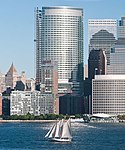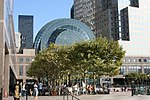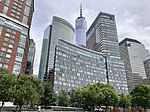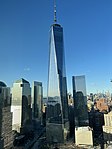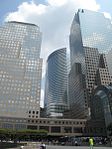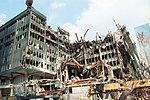200 Vesey Street
American ExpressBattery Park CityBrookfield Place (New York City)Brookfield Properties buildingsEmporis template using building ID ... and 5 more
Lehman BrothersOffice buildings completed in 1986Skyscraper office buildings in ManhattanUse mdy dates from August 2019West Side Highway

200 Vesey Street, formerly known as Three World Financial Center and also known as American Express Tower, is a skyscraper in Lower Manhattan, New York City. Located on West Street between Liberty Street and Vesey Street, the 739-foot (225 m) building is the tallest in the Brookfield Place complex (formerly known as the World Financial Center). It is similar in design to 225 Liberty Street (formerly Two World Financial Center), except that it is capped by a solid pyramid whereas 225 Liberty is capped by a dome.
Excerpt from the Wikipedia article 200 Vesey Street (License: CC BY-SA 3.0, Authors, Images).200 Vesey Street
Vesey Street, New York Manhattan
Geographical coordinates (GPS) Address Nearby Places Show on map
Geographical coordinates (GPS)
| Latitude | Longitude |
|---|---|
| N 40.713611111111 ° | E -74.014722222222 ° |
Address
Vesey Street 200
10281 New York, Manhattan
New York, United States
Open on Google Maps

